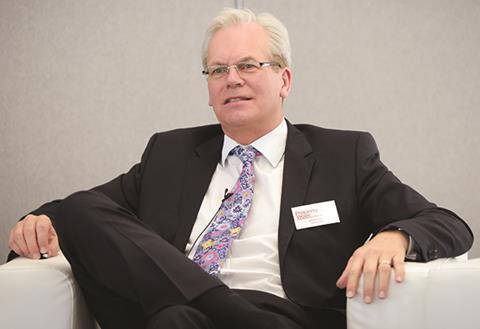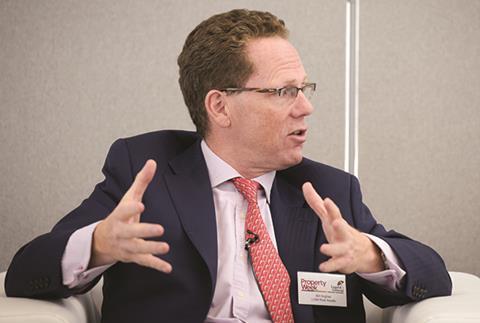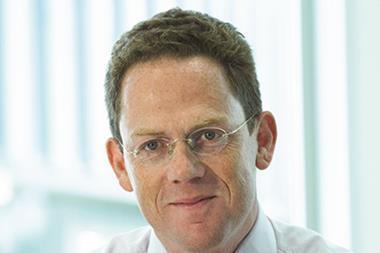New energy efficiency standards which are now or soon to be in force have been focusing minds in the property sector. It’s now up to the industry to work out how to become more energy-efficient and sustainable.
On 19 April, Property Week and hosts Legal & General gathered an industry audience in front of an expert panel to discuss the next steps on the path to a greener property industry.
Despite the arrival of the Energy Savings Opportunity Scheme (ESOS) in 2015 and the impending arrival of Minimum Energy Efficiency Standards (MEES) in 2018, other imperatives driving the sector to become more sustainable have faded, said Bill Hughes, head of real assets at LGIM.
“The government is paying less attention than it did and the industry has had other priorities. Change is happening and behaviour is changing, but as an industry we need to redouble our efforts to take voluntary action.”
Part of the answer in making sustainability a higher priority is for the pioneers in the sector to demonstrate the benefits to the wider industry, said Jeremy Collins, John Lewis property director.

“There is an opportunity for the household names in the industry to work to provide thought leadership and to show that it is saving them money by reducing initial consumption and reducing exposure to uncertain energy suppliers.
“They need to show that it makes sense on many levels. Individual organisations have lots of data and ideas and if we can share that we can all improve our performance.”
Another possible way forward is to inspire those responsible for building performance to improve through internal competition, said Mathieu Elshout, director of private real estate Europe, PGGM.
“For us, it’s all about how we drive progress over time. Since 2009, we’ve been requiring our managers to fill in a survey about the assets they are managing and their performance. It gives us a clear picture of our portfolio and it has created a real competition among the managers. They don’t want to be at the bottom of these lists.”
Reasonable payback
The adversarial nature of the owner/occupier dynamic must also be tackled if real progress is to be made, said Chris Richmond, head of real estate at PwC.
“From an occupier’s perspective, it has been a struggle. When we talk to developers, we feel like it’s a hard sell to get them to raise the bar, even when we have been able to demonstrate that the right technology can give reasonable payback over four or five years. There is a fear over cost. Some owners are keen to take the next step but I do think we are miles away from where we need to be.”
Hughes agreed that the ways tenants and landlords worked together had to change. “The relationship between owners and occupiers has historically tended to be a confrontational one, but where there are long-term relationships there is an alignment of interest between the two.
“That means you can come up with some good solutions. That is starting to happen now and there will be more of it. I think those that don’t constructively address the issue are going to miss out.”

Landlords in particular have much work to do to create the conditions for such symbiosis, said Richmond. “In my view, owners and managers don’t understand what the occupiers want and their priorities are not that aligned.
“I’m not seeing quality products being run efficiently or an understanding of what the occupier wants from the building. No one knocks on my door and says: ‘welcome to your new building, how do you want the space to be run? How can we help you? What can we do better?’”
Fostering better collaboration is further complicated by the differing circumstances under which buildings are occupied. Multiple tenants magnify the complexity of building the relationships needed to make progress, said Roger Macklin, associate for performance optimisation at Hoare Lea.
“In my experience, owner-occupied buildings tend to be more efficiently run. Where there are more organisations involved, the buildings are not managed as efficiently.”
Skills gap
A further challenge is understanding how to run a building more efficiently to satisfy the demands and aspirations of both owners and occupiers, said Hughes. “The skills gap here is more worrying than the technology gap. The technology, in terms of smart metering for example, is widespread, but you do find buildings that are dramatically under-managed. Some of it is behavioural, but a lot of it is about dialogues with the tenant and having people on the ground to do it.”
The panel also agreed that identifying effective ways to measure performance over time also mattered, with energy performance certificates widely seen as a poor measure on which to build industry-wide progress. Wider adoption of Voluntary Display Energy Certificates (VolDECs) was seen as offering a more promising solution by several on the panel, as they cover both landlord and tenant energy.
“The imposition of DECs on public buildings has been there for some time and is absolutely the right way forward,” said Hughes. “We think that is the right way to measure the energy performance of a building, rather than a kite mark or a measurement that is static. These buildings should be monitored as they are being used.”
This did pose challenges where tenants lacked the skills, or were simply unwilling, to engage, said Richmond. “Managing agents are the link between owners and occupiers and they have a fundamental role to play in communicating what is going on in the wider industry.”
Audience member Eimear Moloney, associate building services engineer at Hoare Lea, pointed out that the challenge of managing buildings well is further complicated by the supply-chain complexity arising from the amount of outsourcing in the industry, combined with a lack of requisite skills.

Hughes agreed that outsourcing posed a challenge when it comes to greening the sector. “I do think outsourcing has gone too far. At every single level of outsourcing there is a communication issue, a knowledge issue and a disintermediation issue, a lack of care and a responsibility issue.
“In some cases, we need to think about insourcing now. There is certainly an engineering skills gap within buildings, but we must not forget that we want to encourage everyone in the supply chain to up their game around sustainability.”
Asked what it would take to drive faster and more ambitious progress in future, Collins identified a broader cross-industry collaboration as key. “We will continue to develop our thinking. What would be fantastic in two years’ time is to see this forum on a large scale with a debate on a joint paper by industry bodies for developing a clear framework for owners and occupiers that provides a platform we can take to government.”
It was a proposal Hughes, as chair of the Property Industry Alliance (PIA), promised to pursue. “One thing I can take away from today is to forcefully request that all the member organisations work together to build that platform around sustainability. The PIA is the place to do it because members represent such a broad church.”
OUR PANEL OF EXPERTS
Jeremy Collins, property director, John Lewis
Mathieu Elshout, director, private real estate Europe, PGGM
Bill Hughes, head of real assets, LGIM
Chris Richmond, head of real estate, PwC
Roger Macklin, associate, performance optimisation, Hoare Lea
Liz Hamson (chair), editor, Property Week
The event was held on 19 April at 99 Gresham Street, London EC2
In association with:





































No comments yet